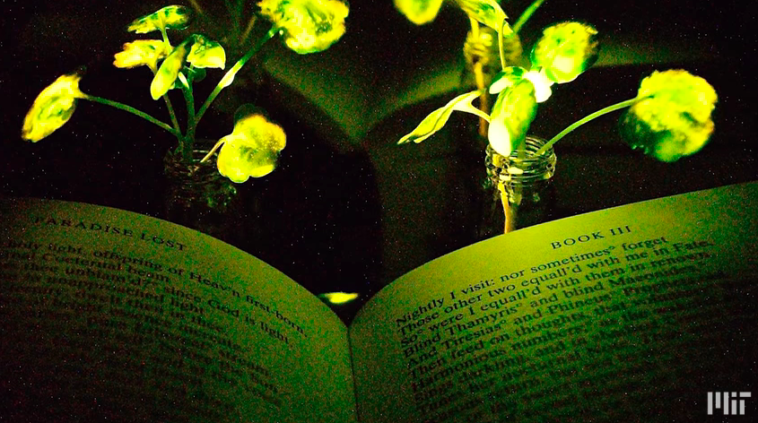We may not give it much thought but plants actually power life on earth and are the original food source that supply energy to almost all living organisms. Plants form the basis for fossil fuel that brings power demands of the modern world. But scientists have found a better way to harness the power of living plants today.
Recently a team at MIT research, by using an enzyme named as luciferase has engineered plants that glow in the dark. By embedding especial Nano-particles into the leaves of water crust plants MIT engineers have been able to induce the plants to give off a dim light for nearly four hours. They believe that with further optimization these kinds of plants will be able to illuminate the entire workplace in the future. You can imagine that when it gets dark, instead of switching a lamp you could read by the light of a glowing plant placed on your desk.
For creating these plants, the MIT team turned towards luciferase, the enzyme that gives fire flies their glow. Luciferase acts on a molecule called Luciferin causing it to emit light. Another molecule called co-enzyme A helps the process alone by removing a reaction by-product that can inhibit luciferase activity. Each of these three components was packaged by the team into Nano-particle carriers of varying size to help each component get to the right part of the plant. To get the particles into the leaves of the plant, the researchers first suspended the particles in the form of a solution. The plants afterwards were immersed in the solution and were exposed to high pressure allowing the particles to enter the leaves through tiny pores. These tiny pores are called stomata. Once the particles reach the leave, they gradually release the luciferase then enter the plant cells as the luciferase performs the chemical reaction that causes the luciferase to glow.
Previous efforts on glowing plants have relied on genetically engineered plants to express the gene for luciferase. But this is a difficult process that yields extremely dim form of light and is often limited to one type of plant. The new method that has been developed at MIT can be used on any type of plant. Up till now, scientists have been able to replicate the results on arugula, spinach, watercress, and now kale. But the scientists have planned to take this science a lot further by testing the same on plants standing in for outdoor electric light.
By using their own energy to brighten up a place after dark, these plants can alleviate the burden on the energy resources. The researchers say that in future this technology could be used to provide low intensity indoor lighting that can transform trees into self-powered street lights.
Video: Melanie Gonick/MIT






